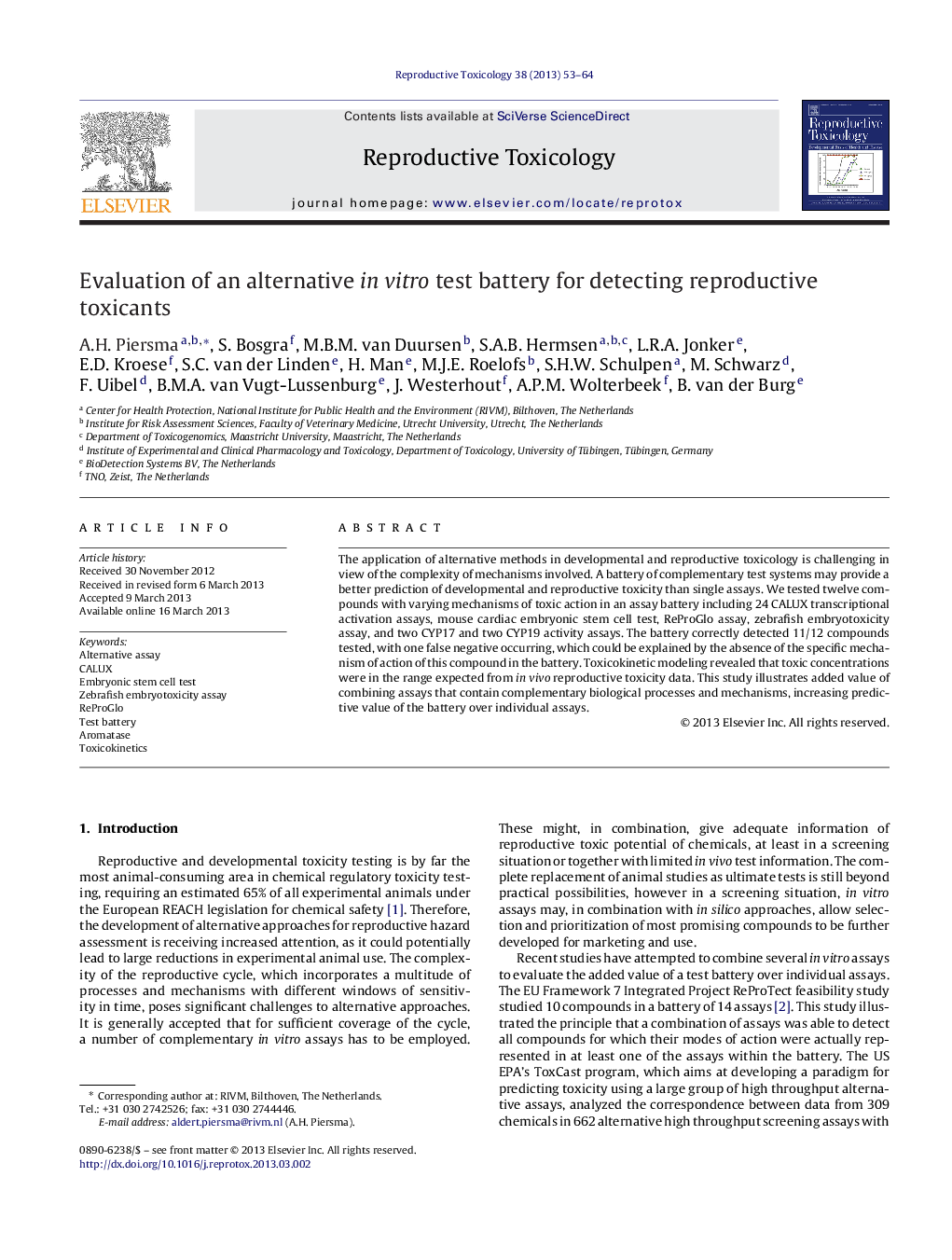| Article ID | Journal | Published Year | Pages | File Type |
|---|---|---|---|---|
| 2593598 | Reproductive Toxicology | 2013 | 12 Pages |
•We tested 12 compounds in a battery of alternative reproductive and developmental toxicity tests.•The battery scored 11/12 compounds correctly, with one false negative.•The false negative was explained by absence of the relevant mechanism from the test battery.
The application of alternative methods in developmental and reproductive toxicology is challenging in view of the complexity of mechanisms involved. A battery of complementary test systems may provide a better prediction of developmental and reproductive toxicity than single assays. We tested twelve compounds with varying mechanisms of toxic action in an assay battery including 24 CALUX transcriptional activation assays, mouse cardiac embryonic stem cell test, ReProGlo assay, zebrafish embryotoxicity assay, and two CYP17 and two CYP19 activity assays. The battery correctly detected 11/12 compounds tested, with one false negative occurring, which could be explained by the absence of the specific mechanism of action of this compound in the battery. Toxicokinetic modeling revealed that toxic concentrations were in the range expected from in vivo reproductive toxicity data. This study illustrates added value of combining assays that contain complementary biological processes and mechanisms, increasing predictive value of the battery over individual assays.
